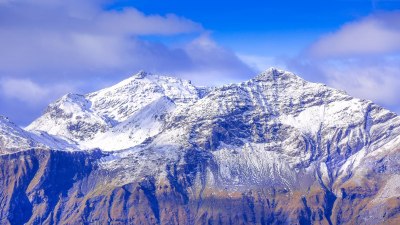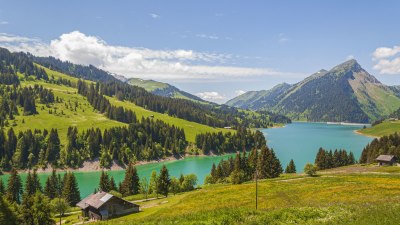The Ultimate 16-Day Trek to Everest Base Camp
Discover everything you need to know about the 16-day trek to Everest Base Camp.

Image by nnazarovaphoto on Freepik
The Ultimate 16-Day Trek to Everest Base Camp is a once-in-a-lifetime journey that offers stunning landscapes, rich cultural experiences, and the challenge of traversing difficult terrain. This guide serves as a comprehensive resource for adventurers planning to tackle this iconic trek, providing essential tips to maximize enjoyment and safety along the way.
The trek to Everest Base Camp (EBC) is not just about reaching the foot of the world’s tallest mountain; it’s also about immersing oneself in the breathtaking beauty of the Himalayas, embracing unique Sherpa culture, and experiencing the camaraderie that comes with trekking in a group. As trekkers ascend to the base camp at 5,364 meters (17,598 feet), they will encounter lush forests, glacial rivers, and towering peaks, making every step a memorable experience.
Preparation for the Trek
Before embarking on the journey, thorough preparation is essential for a successful trek. This includes obtaining the necessary permits, packing the right gear, and ensuring a good level of health and fitness. The trekking permit required for EBC includes the Sagarmatha National Park Entry permit and the TIMS (Trekkers' Information Management System) card. These can typically be secured in Kathmandu through designated agencies or trekking companies.
Physical fitness cannot be emphasized enough. Start training several months before your departure, focusing on endurance through hiking, walking, and cardiovascular exercises. Trekking at high altitudes imposes additional stress on the body; therefore, ensuring that you can walk long distances daily is crucial.
As for gear, the right clothing and equipment can make a significant difference in comfort during the trek. Essential items include a lightweight and durable backpack, insulated jackets, moisture-wicking layers, trekking poles, a good pair of hiking boots, and a sleeping bag rated for cold temperatures. Don’t forget basic necessities like a first-aid kit, water purification tablets, and snacks for energy on the ascent.
Itinerary Overview
The classic Everest Base Camp trek typically spans 16 days, allowing ample time for acclimatization, exploration, and rest. Here’s a brief overview of a typical schedule:
- Day 1: Fly from Kathmandu to Lukla, then trek to Phakding.
- Day 2: Trek from Phakding to Namche Bazaar, known as the gateway to EBC.
- Day 3: Acclimatization day in Namche; hike to Hotel Everest View for great mountain vistas.
- Day 4: Trek from Namche to Tengboche; visit its famous monastery.
- Day 5: Continue from Tengboche to Dingboche, enjoying the views of Ama Dablam.
- Day 6: Another acclimatization day in Dingboche; optional hike to Nangkartshang Peak.
- Day 7: Trek from Dingboche to Lobuche, passing memorials for climbers.
- Day 8: Trek from Lobuche to Everest Base Camp; enjoy the breathtaking views.
- Day 9: Spend the day at EBC; return trek to Gorak Shep.
- Day 10: Hike to Kala Patthar for sunrise views of Everest, then return to Pheriche.
- Day 11: Trek from Pheriche back to Tengboche.
- Day 12: Continue from Tengboche back to Namche.
- Day 13: Trek from Namche to Lukla.
- Day 14: Flight back from Lukla to Kathmandu.
- Day 15: Buffer day in Kathmandu to explore or rest.
- Day 16: Departure from Kathmandu.
Acclimatization: The Key to Success
Acclimatization is a vital aspect of any high-altitude trek, reducing the risk of altitude sickness, which can manifest as headaches, nausea, fatigue, and dizziness. The body's ability to adjust to lower oxygen levels is key to enjoying the trek and ensuring safety. The itinerary includes strategic acclimatization days to allow trekkers to adapt before ascending further. During these days, it is beneficial to engage in light walks that elevate heart rates without overexerting oneself.
Keep hydrated and aware of your body’s signals. If symptoms of altitude sickness arise, it is crucial to descend immediately and seek medical assistance if necessary. Trekking guides and support staff are trained to monitor the group’s wellbeing, and their experience is invaluable for making sound decisions on the trail.
Local Culture and Environment
Along the trek, trekkers will experience the Sherpa culture, renowned for its warm hospitality and rich traditions. Stop in local teahouses for traditional Sherpa meals, which typically include dal bhat (lentil soup and rice), vegetables, and sometimes meat. Visiting local monasteries like Tengboche Monastery not only offers spiritual insights but also presents a chance to learn about Tibetan Buddhism. Interacting with locals provides fascinating perspectives on high-altitude living and the challenges they face.
The surrounding environment features a diverse ecosystem, with stunning flora and fauna. Keep an eye out for Himalayan tahr, musk deer, and various bird species that inhabit the lush valleys and rugged peaks. It’s essential to be mindful of environmental conservation during the trek—carry trash back with you, respect wildlife, and advocate for sustainable trekking practices.
Safety Tips for the Trek
While the trek to Everest Base Camp is a thrilling endeavor, safety should always be a priority. Always walk with a buddy, stay on marked trails, and follow the guidance of experienced guides. Be alert to changes in weather conditions, as the Himalayas are known for their unpredictable climate. Wearing layers and being prepared for both warm and cold conditions is essential.
In case of emergencies, equip yourself with the knowledge of the nearest medical facilities en route and always have a plan for evacuation should unexpected circumstances arise. Using a reputable guide service and having travel insurance that covers trekking at high altitudes will provide an added layer of security.
The Ultimate 16-Day Trek to Everest Base Camp is undoubtedly an unforgettable adventure filled with beauty, challenge, and cultural richness. Each step taken towards the base of Everest is a testament to the strength of the human spirit and the desire to conquer the great outdoors. By preparing adequately, respecting the local culture, and prioritizing safety, this magnificent journey offers unparalleled rewards and experiences that will linger in the hearts of trekkers long after they return to their daily lives. Whether standing at Base Camp or enjoying the views from Kala Patthar, the memories created on this trek will be cherished for a lifetime.











